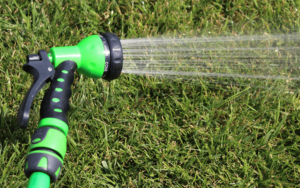Australia’s unique environment is home to a diverse range of flora and fauna, many of which are found nowhere else on Earth. However, this biodiversity is under significant threat from human activities, climate change, and invasive species. According to leading experts, restoring the environment and saving threatened species is not only crucial but also financially feasible. Remarkably, this ambitious goal could be achieved for just 0.3% of the nation’s Gross Domestic Product (GDP). This article explores the potential benefits of such an investment and the strategies that could be employed to protect Australia’s natural heritage.
The Cost of Environmental Restoration
Investing in environmental restoration involves a wide range of activities aimed at repairing ecosystems, protecting endangered species, and mitigating the impacts of climate change. Experts argue that an annual investment equivalent to 0.3% of Australia’s GDP could make a significant difference. This investment would cover:
- Habitat Restoration: Repairing and revitalising degraded ecosystems, such as forests, wetlands, and coral reefs, to support biodiversity and provide essential services like carbon sequestration and water purification.
- Species Protection Programs: Implementing targeted conservation efforts for endangered species, including breeding programs, habitat protection, and the control of invasive species.
- Sustainable Land Management: Promoting practices that balance agricultural productivity with environmental sustainability, reducing land degradation and supporting wildlife habitats.
- Climate Change Mitigation: Investing in renewable energy, reforestation, and other initiatives to reduce greenhouse gas emissions and build resilience against climate impacts.
Economic and Environmental Benefits
The proposed investment in environmental restoration and species protection is not only about preserving nature for its own sake. It also brings substantial economic and social benefits:
- Job Creation: Environmental restoration projects can create numerous jobs in sectors such as forestry, agriculture, and renewable energy. These projects can provide employment opportunities in rural and regional areas, supporting local economies.
- Tourism Growth: Australia’s unique wildlife and natural landscapes attract millions of tourists each year. Protecting and restoring these assets can enhance the country’s appeal as a tourist destination, boosting the tourism industry.
- Health and Well-being: Natural environments provide critical ecosystem services, such as clean air and water, which are essential for human health. Access to green spaces also promotes physical and mental well-being.
- Long-term Sustainability: Investing in the environment ensures the long-term sustainability of natural resources, which are vital for agriculture, fisheries, and other industries. Healthy ecosystems are more resilient to environmental changes and can support sustainable economic activities.
Strategies for Environmental Restoration
To effectively allocate the proposed investment, a comprehensive strategy is required. Key components of this strategy include:
- Collaborative Governance: Successful environmental restoration requires collaboration between government agencies, non-governmental organisations, Indigenous communities, and private sector stakeholders. Effective governance structures are essential to coordinate efforts and ensure accountability.
- Science-Based Approaches: Restoration efforts should be guided by scientific research and evidence-based practices. This includes monitoring ecosystem health, assessing the effectiveness of interventions, and adapting strategies based on new knowledge.
- Community Engagement: Engaging local communities in conservation efforts is crucial. Community involvement ensures that restoration projects address local needs and values, fostering a sense of ownership and stewardship.
- Funding and Incentives: Sustainable financing mechanisms, such as government funding, private investments, and market-based incentives, are necessary to support long-term restoration efforts. Innovative funding approaches, such as biodiversity credits and eco-tourism initiatives, can also play a role.
Overcoming Challenges
While the benefits of investing in environmental restoration are clear, there are challenges to be addressed:
- Funding Allocation: Ensuring that funds are allocated effectively and transparently is crucial. Mechanisms must be in place to monitor spending and measure outcomes.
- Balancing Interests: Environmental restoration can sometimes conflict with economic development and land-use interests. Striking a balance between conservation and development is essential to gain broad support for restoration efforts.
- Climate Change: Ongoing climate change poses a significant threat to restoration efforts. Adaptive management strategies are needed to address the uncertainties and impacts of a changing climate.
Conclusion
Restoring Australia’s environment and saving threatened species is not only a moral imperative but also a sound economic investment. For just 0.3% of GDP, Australia can secure its natural heritage, create jobs, boost tourism, and enhance the well-being of its citizens. By adopting a strategic, science-based approach and fostering collaboration across sectors, Australia can lead the way in environmental conservation and demonstrate that economic prosperity and environmental sustainability go hand in hand.





